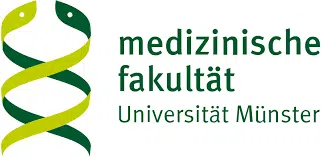Research Area C
Sperm dysfunction and ciliopathies
Male infertility is often due to defective sperm function rather than production. However, semen analysis identifies only severe motility defects caused, e.g. by primary ciliary dyskinesia (PCD), which can also involve multiple morphological abnormalities of sperm flagella. The causes of these defects remain largely undetermined. Moreover, in many infertile patients, semen analysis yields normal results (normozoospermia), suggesting an unexplained sperm dysfunction, e.g. due to defective key signalling molecules such as ion channels and transporters. Here, similarly, the underlying mechanisms have remained enigmatic. Thus, this research area aims to elucidate the pathomechanisms underlying male infertility due to ciliopathies and unexplained sperm dysfunction,shedding light on the genetic, molecular, and cellular programmes controlling the function of sperm and motile cilia.
Research
projects
- Timo Strünker (PhD) and Benjamin Risse (PhD) jointly study signalling pathways that control sperm motility in health and disease. A Medical Scientist working in the field of computer vision in the Risse group will develop tailored tracking algorithms and AI-based bottom-up approaches to assess videos of sperm from fertile donors and patients that are normozoospermic but infertile. In parallel, a Medical Scientist will be working in the field of signal transduction in the Strünker group. She/he will characterise chemosensory Ca2+-signalling pathways controlling sperm motility using electrophysiological recordings, Ca2+– and Vm-imaging, and high-speed flagellar beat analysis.
- A Clinician Scientist co-supervised by Heymut Omran (MD) and Johanna Raidt (MD) will be involved in the detailed phenotypic and genotypic characterisation of infertile patients, identifying known and novel motile ciliopathy gene variants involved in male infertility. To validate the impact of these mutations, transmission electron and immunofluorescence microscopy will be performed using high-resolution (confocal) imaging. This approach is combined with high-speed video microscopy analyses as well as sperm motility analyses.



